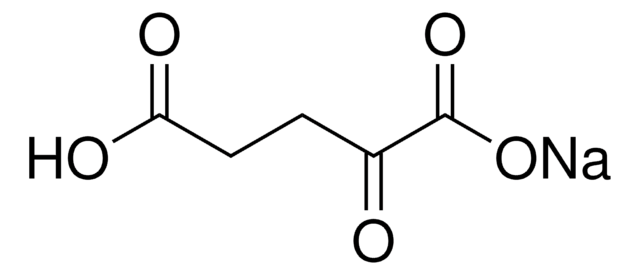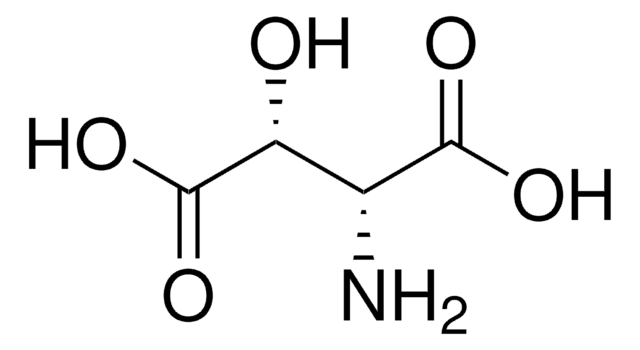K2389
Kainic acid monohydrate
≥98% (HPLC), from Digenea simplex
Synonyma:
2-Carboxy-3-carboxymethyl-4-isopropenylpyrrolidine
About This Item
Doporučené produkty
biological source
Digenea simplex
Quality Level
assay
≥98% (HPLC)
form
powder
color
white
solubility
H2O: >10 mg/mL
storage temp.
2-8°C
SMILES string
O.CC(=C)[C@H]1CN[C@@H]([C@H]1CC(O)=O)C(O)=O
InChI
1S/C10H15NO4.H2O/c1-5(2)7-4-11-9(10(14)15)6(7)3-8(12)13;/h6-7,9,11H,1,3-4H2,2H3,(H,12,13)(H,14,15);1H2/t6-,7+,9-;/m0./s1
InChI key
FZNZRJRSYLQHLT-SLGZUKMRSA-N
Hledáte podobné produkty? Navštivte Průvodce porovnáváním produktů
Application
- As a convulsant to induce epileptogenesis and epilepsy in mice.
- To stimulate in vitro excitotoxic trauma in spiral ganglion neurons on inner hair cells.
- To induce seizures in rat model.
- To induce status epilepticus in adult male Wistar rats.
Biochem/physiol Actions
Related product
Storage Class
11 - Combustible Solids
wgk_germany
WGK 3
flash_point_f
Not applicable
flash_point_c
Not applicable
ppe
Eyeshields, Gloves, type N95 (US)
Vyberte jednu z posledních verzí:
Osvědčení o analýze (COA)
Nevidíte správnou verzi?
Potřebujete-li konkrétní verzi, můžete vyhledat daný certifikát podle čísla dávky nebo čísla šarže.
Již tento produkt vlastníte?
Dokumenty související s produkty, které jste v minulosti zakoupili, byly za účelem usnadnění shromážděny ve vaší Knihovně dokumentů.
Náš tým vědeckých pracovníků má zkušenosti ve všech oblastech výzkumu, včetně přírodních věd, materiálových věd, chemické syntézy, chromatografie, analytiky a mnoha dalších..
Obraťte se na technický servis.








